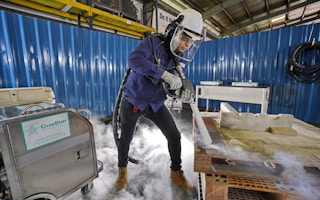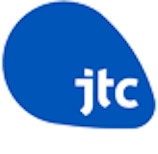Cleaning is a function that commonly remains out of sight and out of mind, and this is doubly the case for industrial cleaning—the cleaning of factory premises and equipment.
As a result, few people realise how much waste industrial cleaning generates, or how potentially hazardous that waste can be.
However, Huang Wen Jia, the general manager of local industrial cleaning firm Cuestar Industry, says: “Plant owners are increasingly interested in how they can embrace environmentally friendly initiatives.”
The Singapore SME is located in Tuas Industrial Estate, close to Jurong Island where a number of its pharmaceutical and mechanical contracting clients are based. About 10 per cent of Cuestar’s chemicals are certified as environmentally friendly, a number the company is keen to grow.
“We have always tried to reduce the use of toxic chemicals and bring in greener and more environmentally friendly chemicals,” says Huang.
Are companies open to greener cleaning methods?
Two years ago, Cuestar began offering dry ice blasting as a substitute for sand blasting and chemical cleaning. Dry ice blasting uses dry ice pallets as the abrasive media to remove dirt and impurities from equipment.
It has been commercially used in various applications for several decades, and companies that offer it in other countries frequently market it as an environmentally responsible cleaning solution because it generates much less waste than other abrasive blasting methods—the dry ice particles simply sublimate into carbon dioxide, leaving only the solid residue of whatever contaminants were removed.
“We knocked on a lot of doors,” says Huang. “Singapore companies tend to be quite conservative about using new methods. Our breakthrough only came when one of our clients began using dry ice blasting in its US plant. That made them more receptive to trying it out in the Singapore plant.”
More widely used methods include chemical cleaning, which involves soaking an entire piece of equipment in chemicals and then rinsing it with water. The chemicals and contaminated water can amount to as much as three times the volume of the equipment being cleaned.
Sandblasting is another commonly used form of cleaning that involves directing a high-pressure stream of abrasive particles at the surface to be cleaned to blast dirt and oxides away. The abrasive media inevitably ends up contaminated by dirt and toxic materials. Both methods produce significant amounts of waste.
In comparison, dry ice blasting reduces the resulting amount of waste and provides savings on waste disposal costs, says Huang.
And although dry ice blasting releases carbon dioxide into the air, the volume is not substantial enough to create environmental contamination and is smaller than emissions from chemical cleaning, says Huang.
The time savings are also considerable: in jobs that would take up to three days with chemical cleaning, dry ice blasting takes less than one. Overall, the total cost savings from the dry ice method add up to as much as 20 per cent, and it was this number that convinced her clients.
“Our clients do recognise the savings on the waste,” she says. “In the past, when we were first brought up the dry ice method to them, they were not so receptive as they worried that the procedure is more expensive than other methods. But once waste disposal is factored in, the cost becomes more acceptable.”
Today, some of Cuestar’s clients on Jurong Island use the dry ice method for routine cleaning of their equipment, and others have indicated that they are comfortable with using it for ad hoc cleaning jobs.
Practicality still a key driving factor
This is not to say that plant owners have rushed to embrace greener solutions. Cuestar’s clients value the method firstly because it is applicable to certain sensitive jobs, secondly for its speed and reduced waste generation.
“Dry ice blasting is commonly adopted for equipment that is sensitive to water, such as the cleaning of electrical motors and the removal of paints from airplane parts in a clean environment,” she explains.
Companies tend to prefer methods that they are familiar with, fearing that any change would cause them to incur increased downtime or higher costs elsewhere.
Also, dry ice blasting as a cleaning method does have its limitations. For example, it is effective mainly for smaller equipment, and cannot be safely utilised in enclosed areas due to the large volume of carbon dioxide produced. Sometimes, the design of the equipment—sensitivity to low temperatures, for instance—precludes its use.
Huang estimates that out of all the cleaning jobs Cuestar takes on where dry ice cleaning would be viable, only 10 per cent actually use the method currently, with cost savings as the main motivating factor for clients.
In the future, she hopes more companies will be more receptive towards methods like dry ice blasting, not only for its cost effectiveness but also because it reduces the use of potentially toxic chemicals. “We handle a very large volume of chemicals all the time, and we are aware of the amount of waste and the environmental hazards involved. Even if green methods cost a little more, we should try to embrace them,” says Huang.
Cuestar’s vision is to provide efficient cleaning solutions that do not harm the environment, says Huang. “We will continue to invest and develop technologies that push the boundaries of sustainability, innovation and productivity.”


















